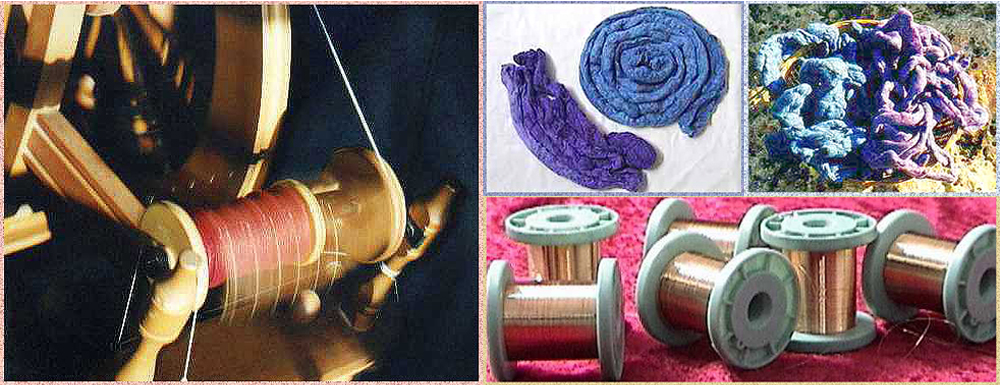
The Materials Used in Weaving the Garments
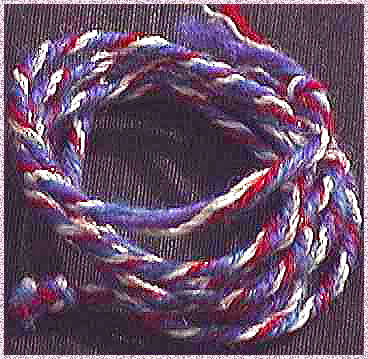
"And you shall make the breastplate of judgment, the work of an artist; after the manner of the ephod shall you make it: of gold, sky-blue, dark-red, and crimson dyed wool, and of twisted linen shall you make it." (Ex. 28:6,15)
The Torah instructs that each thread used in the High Priest's breastplate and ephod must be 28 ply: each thread is made from 6 threads each of TECHELET (sky-blue), of ARGAMAN (purple), of TOLA'AT SHANI (crimson) and of white twisted linen, and 4 threads of PURE GOLD.
Wool dyed with the authentic, ancient Biblical dyes, "TECHELET" (sky-blue) and "ARGAMAN" (purple), in preparation for the weaving of the breastplate garment. In addition to these colors, the breastplate is also made with wool dyed with "TOLA'AT SHANI" (crimson) and white twisted linen, as well as threads of pure gold. (see Ex. 28:15)
Wool dyed with the "argaman" purple dye is spun into thread for use in the Ephod.
Crimson colored wool, spun and ready to be included in the threads of the ephod, which has been dyed with color obtained from the tola'at shani, the "crimson worm" (Armenian Conchial Insect).
Skeins of spun crimson wool.
The camera captures the speed of the spinning wheel.
Over 600 meters of thread made of pure gold has been prepared for the weaving of the High Priest's breastplate. Each string in the garment is composed of 28 threads:
6 of TECHELET, 6 of ARGAMAN, 6 of TOLA'AT SHANI,
6 of white twisted linen, and 4 of PURE GOLD. (see Ex. 28)
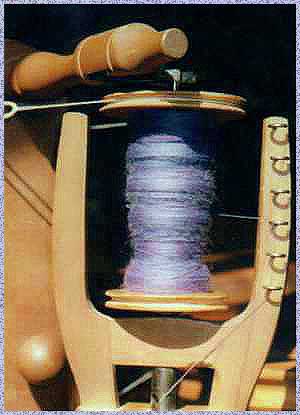
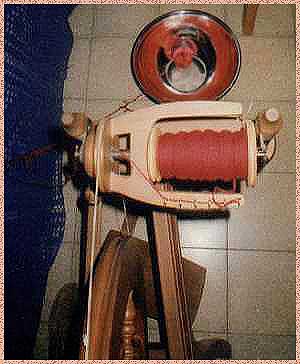
Wool dyed with the "argaman" purple dye is spun into thread for use in the Ephod.
Crimson colored wool, spun and ready to be included in the threads of the ephod, which has been dyed with color obtained from the tola'at shani, the "crimson worm" (Armenian Conchial Insect).
Skeins of spun crimson wool.
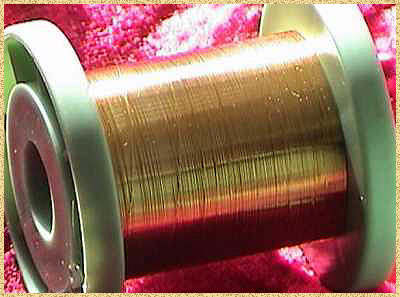
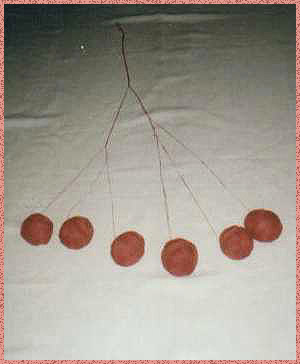
Over 600 meters of thread made of pure gold has been prepared for the weaving of the High Priest's breastplate. Each string in the garment is composed of 28 threads:
6 of TECHELET, 6 of ARGAMAN, 6 of TOLA'AT SHANI,
6 of white twisted linen, and 4 of PURE GOLD. (see Ex. 28)

Inside the Priestly Wardrobe
"Windows" Were Assigned for Each Shift's Uniforms
We have already seen that a great number of priests served in the Holy Temple, and that those officiating were divided into shifts, which consisted of family groupings. Maimonides records (Laws of Temple Vessels, 8:6-10) that each one of these shifts had its own "window" in which the clothes for all the members of that respective shift were kept. Thus, he writes, there were 96 such cubbyhole-lockers; 4 windows for each of the 24 shifts. Within these windows, the clothing was kept in the same order in which it was put on.
The Ordinary Priests
The name of each shift was inscribed upon its windows; when the shift was not on duty, its windows were kept closed. Each shift which arrived to begin its tour of duty opened its windows on that first Sabbath and took its garments, and the windows were kept open during the entire week. At the close of their week, they returned their garments to the windows.
4 Windows for the 4 Garments
The items of clothing were kept separate in 4 individual windows; this way, the priest who arrives to take up his position will not be confronted by a confused jumble of clothes. All of the pants for his shift were in one window, above which the word "pants" was inscribed; so it was with the belts, the turbans, and the tunics.
The High Priest
The High Priest had no window to store his "golden garments" which he wore every day. Instead, he placed these items within his own chamber at night, or whenever he left the Holy Temple (Maimonides ibid.). This chamber was located in the south side of the Temple court.
The Order of Dressing in the Priestly Garments
The Ordinary Priests
When it came time to enrobe themselves in the vestments of their office, the ordinary priests put on the sacred pants without removing their own civilian personal clothes. That is, the priestly linen pants were placed on over his own clothes, and only afterwards the civilian clothes were removed from underneath. Afterwards, the tunic was put on, and then the belt was tied. The hat was put on last.
The High Priest
The pants are worn in the same manner described above. After the belt is tied, the High Priest puts on the blue robe. The ephod is placed on over the robe, and the breastplate is fastened to the ephod.
With these garments in place, the High Priest's head is wrapped with the turban, and then the crown is tied on his forehead.
The Priests Must be Barefoot When Conducting the Temple Service
The priests wore no shoes or sandals; they would walk barefoot on the marble floors of the Temple courts. This is because the floor of the Temple complex was itself sanctified, just as the Temple proper. Therefore there must be nothing interrupting between the priests and the floor <i>(BT Zevachim 2, 1)</i>, to the extent that if something comes in the way of contact between the priest's feet and the floor, his service is invalid (Maimonides).
"He shall wear the holy linen tunic, and he shall have the linen pants upon his flesh, and shall be girded with a linen belt, and he shall be attired with the linen turban; these are the holy garments; therefore he shall bathe his flesh in water, and put them on" (Lev. 16:4)
Maimonides states that it is these words which indicate that the garments must next to the skin, with nothing else interfering.
